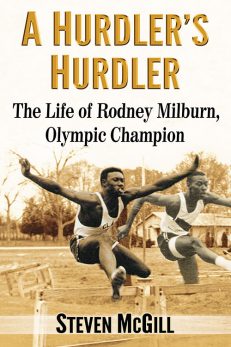Invisibility in African American and Asian American Literature
A Comparative Study
$39.95
In stock
About the Book
The book is a comparative study of the invisibility trope in African American and Asian American literature. It distinguishes between various kinds of invisibility and offers a genealogy of the term while providing a theoretical dissection of the invisibility trope itself. Investigating the various ways of striving for visibility, the author places special emphasis on the need for cooperation among various racial groups.
While the book explores invisibility in a variety of African American and Asian American literary texts, the main focus is on four novels: Ralph Ellison’s Invisible Man, Sam Greenlee’s The Spook Who Sat by the Door, Maxine Hong Kingston’s Tripmaster Monkey and Chang-rae Lee’s Native Speaker. The book not only sheds light on the oppressed but also exposes the structures of oppression and the apparatus of power, which often renders itself invisible. Throughout the study the author emphasizes that power is multi-directional, never flowing only in one direction. The book brings to light mechanisms of oppression within the dominant society as well as within and between marginalized racial groups.
About the Author(s)
Bibliographic Details
Klara Szmańko
Format: softcover (6 x 9)
Pages: 220
Bibliographic Info: notes, bibliography, index
Copyright Date: 2008
pISBN: 978-0-7864-3952-2
Imprint: McFarland
Table of Contents
Acknowledgments v
Preface 1
Introduction 3
ONE. Different Faces of Invisibility: Ralph Ellison’s Invisible Man 25
Invisible Both to Whites and Blacks 28
Invisibility—a Double-Edged Sword 34
Invisibility, Tricksterism and Performativity of Human Identities 43
TWO. Through Invisibility Towards Visibility: Sam Greenlee’s The Spook Who Sat by the Door 55
Invisible Freedom Fighters and Black Nationalism of the 1960s 56
Invisibility of the Black Ghetto 69
Dan Freeman’s Literal Invisibility and Mimicry as a Linchpin of Literal Invisibility 79
Performing Towards Visibility: Maxine Hong Kingston’s Tripmaster Monkey 90
Asian American Invisibility versus
African American Invisibility 92
Staging Chinese American Identity/Invisibility 104
The Pitfalls of Recentering 111
FOUR. Multicultural Invisibilities: Chang-rae Lee’s Native Speaker 123
“Uneasy Coalition of Our Colors” and the Black-Korean American Conflict 127
Beyond Conventional Identity Politics Towards a Politics of Translation 141
Mimicking for the Mainstream 152
Conclusion 157
Chapter Notes 173
Bibliography 195
Index 213
Book Reviews & Awards
“Thoroughly researched but easily accessed, Szmanko’s text provides a provocative and unflinching examination of the current state of race relations within and between these two communities and the white world in which they live”—Journal of the American Studies Association of Texas.





